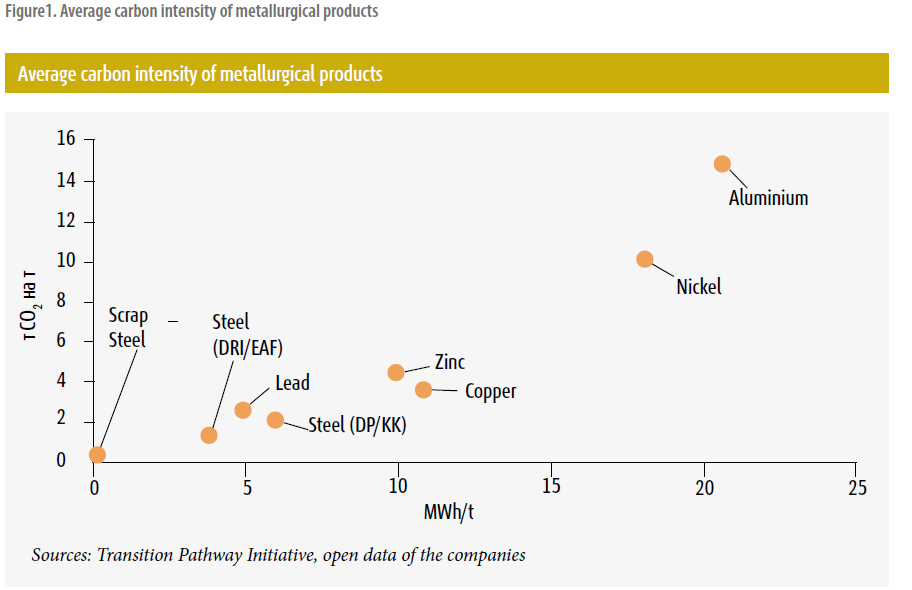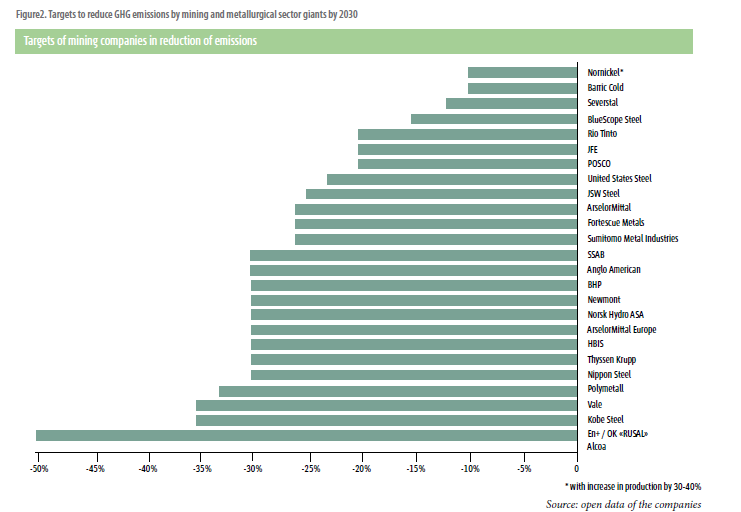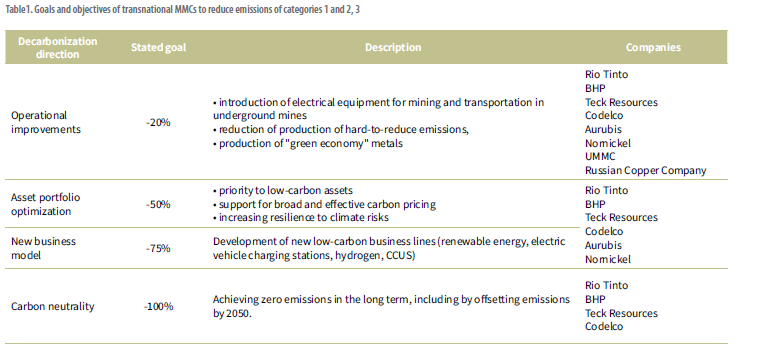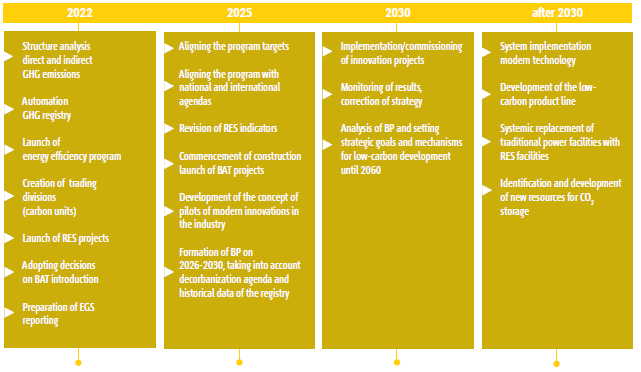Analytics11.09.2022
On the way to decarbonization: the agenda of the mining and metallurgical industry of Kazakhstan

Victor Kovalenko, Partner, Leader in Central Asia, Caucasus and Ukraine, EY Sustainability Services
Anara Samambayeva, Consultant, EY Sustainability Services in Kazakhstan
According to estimates for 2020, 13.5% of global greenhouse gas (GHG) emissions were from ore mining and smelting of steel, aluminum, copper, nickel and cobalt1. These components of "clean energy" sources, such as wind and solar power plants, hydroelectric power plants and electric vehicles, must now themselves be "clean" along the entire value chain - from ore extraction processes to the final product. The degree of "purity" is determined by Scope 1, Scope 2, and Scope 3 emissions.
The intensity of emissions depends on the volume of production, the specific product, the technology used and its energy efficiency (Figure1). For example, in the steel sector, where coal accounts for 70% of energy consumption, the carbon intensity of a traditional basic oxygen furnace is approximately 2.0 tons of CO2 per ton of product. To put it into perspective, when using the method of direct reduction of iron in an electric arc furnace, 1.4 tons of CO2 / t are emitted, and when using scrap - 0.3 tons of CO2/t. The global average carbon intensity of aluminum production is about 15.0 tons of CO2 per ton of metal, but it decreases to 4.0 tons of CO2 when switching to hydroelectric power. The carbon intensity of copper, which averages 2.6 tons of CO2/ton2, can be reduced by 80% when implementing a scenario with the transition to renewable energy and electrification of mine trucks3.

WHAT DRIVES DECARBONIZATION IN THE MINING AND METALLURGICAL SECTOR?
According to the results of the EY survey in 2022, international operators of the mining and metallurgical sector associate the main business risks and opportunities with the "three pillars" of sustainable development: environmental, social and managerial factors (ESG) and decarbonization. In the last four years, the demand for ESG has more than doubled. 72% of respondents stressed the importance of ESG in formation of their asset portfolio, compared with 32% in 20184.
ESG factors become decisive for the attractiveness and long-term success of investments. Being underestimated in the past, their importance has recently been demonstrated everywhere from the coast of Peru to the steppes of Kazakhstan, often in the form of strikes, which leads to significant losses in production volumes.
The driving factors of decarbonization in the mining and metallurgical industry are the tightening of international and national regulation in order to reduce emissions. Thus, the EU package of measures (Fit for 55), and in particular, the cross-border carbon regulation mechanism (CBAM) introduce additional payments for importers of iron, steel and aluminum. Next year, it is planned to introduce a requirement for mandatory reporting on the carbon intensity of the supplied products, and in 2026 - the full implementation of a mechanism where the supplier will have to purchase a certificate of carbon intensity of products at carbon prices set in the EU market. These requirements will not apply only to those producers who have already paid for their emissions in the country of production. For reference, the carbon price in the European Emissions Trading System (ETS) at the beginning of 2021 amounted to 30 euros per ton of CO25, whereas in Kazakhstan the price will increase from 1 euro/ton of CO2 in 2022 to 15 euros/ ton of CO2 in 2023-2025.
At the national level, Kazakhstan plans to reduce the number of quotas for GHG emissions by 2030, and to introduce a carbon tax for non-quota emissions of smaller enterprises in 2023-2025. The Doctrine on achieving carbon neutrality of the Republic of Kazakhstan until 2060 focuses on those areas of industry that will primarily be affected by CBAM (aluminum, steel). The document highlights the existing potential to reduce the carbon footprint by increasing waste recycling for the production of "green" aluminum and steel, replacing coal with natural gas and hydrogen, technological transformation, carbon capture and storage mechanisms and equipment modernization.
HOW TO DECARBONIZE THE MINING AND METALLURGICAL SECTOR OF KAZAKHSTAN?
As a result of these new developments, there is a risk of increasing the cost of production in the industry. In order to reduce the impact of these measures and adapt the sector to stricter climate regulation, it is recommended that business decarbonization strategy be developed right now, integrate it into all business processes of the company so that it becomes not an "appendage" of the business, but a key indicator of its effectiveness.
The largest players in the industry have already announced quantitative goals (Figure 2) and an action plan to reduce direct and indirect emissions generated during the extraction and production of metals (Table 1). Thus, to reduce Scope 1 and 2 emissions the asset portfolio is revised with more emphasis placed on less carbon intense assets and substituting coal with renewables and hydrogen, as well as energy recycling using batteries instead of fossil fuels in different areas of application. At the same time, measures are being taken to improve energy efficiency by introducing new technologies and improving operational processes, which often has the additional advantage of increasing labor productivity.

The set of tools for each operator in the industry will be individual, but it is already possible to distinguish the following:
• Preparing scenarios to determine the scale of activities and using this data to develop a strategy for decarbonizing the business, taking into account changing conditions, which will prompt the direction of the flow of capital and operating expenses;
• The change in the fuel and energy balance traditionally formed by the burning of coal towards the predominance of renewable energy and hydrogen;
• Reducing the energy intensity of production by introducing the best available technologies (for example, melting in an electron¬arc furnace instead of a blast furnace);
• Formation of tandem between mining and metallurgical assets pursuing similar goals of decarbonizing products in the supply chain offers opportunities not only to share the financial burden, but also to reduce category 3 emissions;
• Participation in emissions trading systems on both mandatory and voluntary carbon markets already has its advantages in the world in the form of carbon tax reduction (Colombia, South Africa);
• Introduction of carbon capture, utilization and storage systems (CCUS) with the possibility of recycling carbon dioxide in the technological cycle;
• The use of blockchain technologies to track and identify opportunities for the reuse of raw materials in metallurgical production.

Currently, the replacement of coal with RES at the enterprises of the sector can be successfully synchronized with the state program to increase the share of RES in the country's energy sector to 15% by 2030 and 50% by 2050. This opens up opportunities to receive government support, investment preferences and access to financing by international institutions (EBRD, UNDP, etc.).
In addition, the country already has a platform for trading unused emission quotas, which, in light of the implementation of CBAM and the reduction in the number of quotas by the Government of the Republic of Kazakhstan, may bring additional profit and eliminate cross-border export fees. According to forecasts, both in the mining and metallurgical industries, the national carbon quota plan for 2022¬2025 assumes a reduction of quotas by 1-2% with each subsequent year.
It is expected that the progress on decarbonization of the mining and metallurgical sector of Kazakhstan will be as follows:

Decarbonization presupposes the next world revolution - the abandonment of coal. World leaders have already announced the termination of state subsidies for the extraction of thermal coal, and the EU countries have made it clear that the number of permits for emissions will decrease linearly with each passing year, and the price of carbon will increase.
According to the results of the last five-year plan, it is obvious that the trade turnover between Kazakhstan and the EU countries is growing (in 2021 it amounted to about 40% of the total volume of exported goods), while the export of metals and products from them (copper, aluminum, rolled metal), ferroalloys and metal-containing ores consistently ranks second and third after hydrocarbons. Therefore, urgent and effective measures are needed to reduce the fiscal burden on the mining and metallurgical industries, maintain and even increase the presence of Kazakh products on the European market. In order to remain competitive, industry companies will have to achieve a dynamic equilibrium, where operating costs and capital investments are offset by new or expanded sales markets and stable investment injections in a favorable social climate.
Kazakhstan and UAE reaffirm strategic energy partnership with 1 GW wind project
Solar becomes EU’s top power source for the first time ever
How decentralised renewables transform healthcare services in rural Zimbabwe
Chinese company to build solar and wind power plants in Kyrgyzstan
Seaturns raises €2.45 million to industrialize wave energy technology and accelerate global rollout
Trump signs executive order to end subsidies for wind and solar energy
Uzbekistan's solar and wind power plants generate 5 Billion kWh since beginning of the year
Green Corridor Alliance JV registered in Baku to promote green energy development in Central Asia and the South Caucasus
In the EU renewable energy supply grew by 3.4% in 2024
IRENA accepting renewable energy project proposals in Central Asia until August 15
Astana to host Electronica Expo Kazakhstan Electronics Exhibition
WB gives rundown of Azerbaijan's green energy grid volume prospects
US solar sets new records as renewables nearly match natural gas – EIA
‘Wings’ on poles: Bill Gates-backed breakthrough wind turbine facility breaks ground
Perovskite tandem solar cell achieves new efficiency record
Kazakhstan and China endorse draft SCO joint statement on sustainable energy development
Innovative research on organic solar cells for space applications
Kazakhstan and Uzbekistan drive green energy progress in Central Asia
KazMunayGas launches pilot green hydrogen project in Atyrau
How private homeowners in Kazakhstan can make money from solar panels











